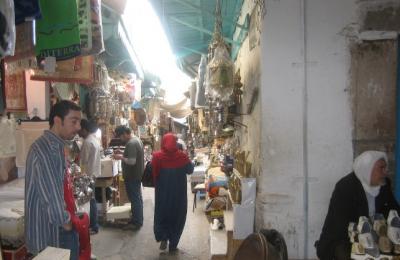When Miss Kirsipuu, who is a member of the Ministry of Social Affairs, selected by and from Societies devoted to social betterment, asked me one day what I should like to see, I said: “Slums.”
“We have no slums now” she answered, slowly, weighing her words - “ no real slums. But some of our living places are not what they ought to be. We shall make them better in due time. We had terrible conditions here right after the war. This city was filthy! And we had suffered so much we were worn out with suffering. So many of our young men had been killed! There was so muck sickness, and no money. We all had to go to work to clean it up, and I think we made a pretty good job of it.”
I murmured that I kept being surprised at the city’s cleanliness and state of repair. But now I wanted to see those parts of it which had been most neglected, and where the poorest people lived.
“We will go to the old Russian ship-building yards, then, she said. On our way through the city she pointed out, rather wistfully, various government housing projects - one large group of ultra-modern apartments with glass corners and many balconies, for municipal and federal employees; several groups of small detached houses for salaried white-collar workers; others, just as pleasant, for wage-earners.
Near the outskirts we came upon a large three-story brick school-building that would have been perfectly at home in any American small city. It had been loaned for the summer vacation by the municipality to the Child Welfare Society; as had also a near-by small park. The children were having their lunch within, and the teachers who came out to the car to greet us, explained that the Home Economics society and the municipality combined to give the children three good meals a day, as well as teaching them singing, painting, and various handicrafts. The pupils came from the poorest classes, especially orphaned or half-orphaned children whose relatives were obliged to work during the day.
In the park, the younger ones were playing about under the trees in the care of play-leaders who lined them up when we came, and had them sing to us. There was one little girl about five years old - an orphan, they told me - who was so charming that I longed to take her home with me. She departed from the Estonian type, for she had brown curly hair, and blue eyes with black lashes. She shepherded the littlest ones and showed them where to stand, and picked up and comforted one who fell down. And when the singing began, she stood holding one younger child against her on each side, while she sang like a little lark, true and sweet, her eyes fixed on the sky above the tree tops. The other teachers, who had come over with us, asked me if I noticed how well she sang.
In answer to my question, Miss Kirsipuu said, “Yes, she will be well-trained. Our people appreciate musical talent, and we provide means for its education. Her gift will not be neglected, even though she is a penniless orphan.” She beamed on the little girl with affectionate pride. There was one rampageous boy, younger and bigger than the little girl, his legs yet chubby with baby fat, his large head tousled with thick blond hair, who was so bursting full of vitality the park wasn’t big enough for him. He fell into the ditch, and howled; but in the very midst of being comforted, darted away and snatched at a pretty leaf another child was quietly examining. He tried clumsily to climb a tree to get another on like it, fell, and howled again, and kicked when rescued. As the children lined up again to sing good-bye to us, he was struggling desperately between two teachers who were trying to hold him in line. Now and then he forgot his rebellion to sing the few notes that he knew.
* * * * * *
“This is the sort of house these children live in,” Miss Kirsipuu said, as we drew up to a dingy set of brown wooden tenements, the paint flecking off them, which was formerly the tenements for workers in the ship-building yards, and had not yet been reclaimed. The entrance, with rough stone steps outside, and broken plastered walls, looked quite slummy enough. We knocked on the first door to our left; and a startled woman opened it, and, recognizing Miss Kirsipuu, began at once to utter apologies. But she really deserved praise for her neat and well-kept rooms. There were only two of them - the kitchen with running water, and plenty of food in the cupboard, was neatly papered; the other room had two beds, two windows with growing plants, a round table in the center, and several simple but comfortable chairs.
As we left, honest Miss Kirsipuu said “This is a fair sample of our worst tenement, but you can imagine it would not look quite so neat if there were four or five children at home to upset it..”
(To be continued)
A Search For a Happy Country (34)
Järjejutt
TRENDING






















